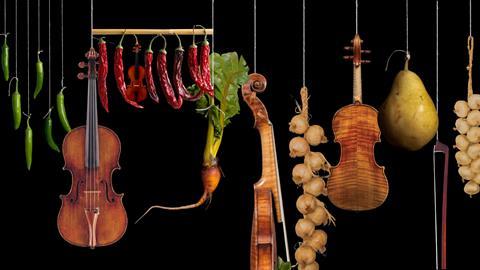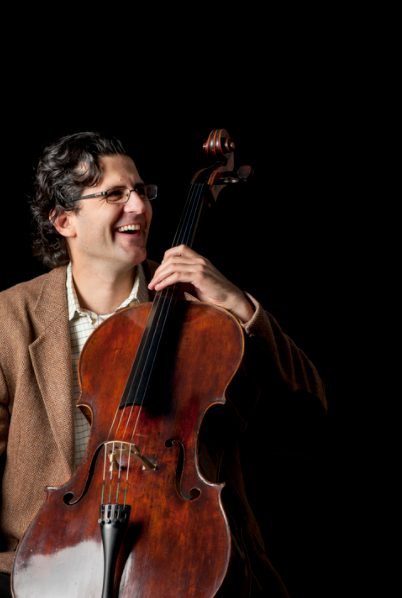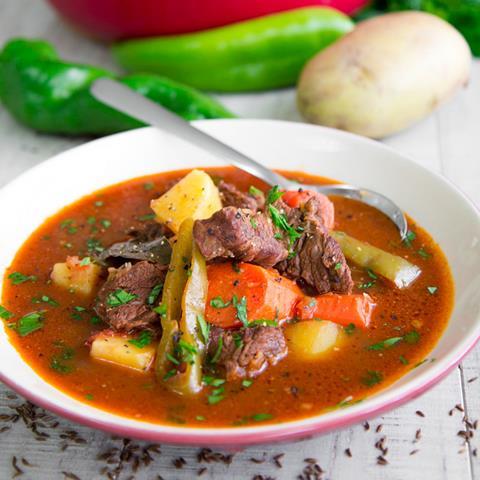Paring away at old transcripts from former Strad interviewees, Rita Fernandes presents string players’ food and cooking analogies that faced the chop and didn’t make the final dish

It’s such a joy to interview some of today’s leading string players. You witness them reliving old memories, revealing quirks and talking about their instruments in ways only masters of their craft can. But no matter how fascinating they are, sometimes it can be difficult to relate to their journeys; they are truly one of a kind. Something I can relate to is an enthusiasm for food many have expressed in recent interviews. A surprising amount have used food and cooking analogies that, for reasons of style and length, made it no further than the transcript. What a shame! So I decided to collect a few of my favourites and list them below. I have also included a few from interviews with The Strad’s contributing editor, Pauline Harding. These, however, did make it to print, despite mine staying hidden in the depths of my desktop’s ‘old transcripts’ folder.
On a separate note, I realised when compiling this list that more than half of the interviewees were cellists. How suspicious. I told cellist and online editor Davina Shum, and she proposed it may be because cellists get hungry while playing Pachelbel’s canon (but then again, she is always hungry). I don’t see how that relates to world-class soloists, but it was nonetheless funny to imagine Rostropovich getting booked for a local wedding gig.
Enjoy!

SOL GABETTA, cello (Life Lessons, February 2022), on inviting new opinions
‘In general, we don’t help others but instead just take care of ourselves – our own kitchen. And so your kitchen becomes a very simple kitchen. I try to make my kitchen very international and rich, with everyone bringing something interesting inside. It’s important to take these opportunities. In the end, I’m the one cooking, but what matters are the tastes that have come in. Then I can pick what I find interesting and cook with it!’
ANNE AKIKO MEYERS, violin, on her lessons with Dorothy DeLay
‘I remember feeling very bewildered after lots of lessons because I was just feeling and learning so much. It was such a whirlwind. I remember thinking, “I have to go through all my technique and understand everything – like the ingredients of a cake. You have to then let it sit and bake.”’

AMIT PELED, cello (Life Lessons, December 2021), on the core elements of string playing
‘There are four fundamentals to playing: intonation, quality of sound, sense of pulse and sense of direction. If you have those four things, you will make a career. Intonation, sound and phrasing are the most important things, then the rest is a matter of taste. I always say, when you make a salad, you want good vegetables – organic and with a good taste. Then, all you need is salt, pepper and oil. The moment you’re covering bad vegetables, it won’t be good. Then you put your salt and pepper on top, and your salad will be so tasty!’
AMIT PELED, cello (Technique, February 2018), on developing a ‘cello vocabulary’
DINNER POSTURE: ‘Put down your bow and pick up a knife or glass in its place. Pretend to eat or drink. Notice how the palm of your hand is higher than your elbow. Mimic that feeling with your bow, in fourth position and at the frog, with low, relaxed elbows. Many cellists lift their elbows up to nose height, particularly when trying to create a juicy sound low on the C string. It isn’t necessary, and it creates so much tension! Play a low D with your elbows up, then in dinner posture, and notice how different it sounds.’
THE BRIDGE AND THE APPLE: ‘Many cellists have weak left-hand fingers and wrists that collapse inwards when they play. To give you more power and independence in the fingers, your knuckles and wrist should fall in a bridge shape. Imagine you are holding an apple in your left hand, to help you find a natural, curved position; you can even try playing while holding an apple, to find the right feeling.’
THE BANANA BOW AND THE CHICKEN WING: ‘The idea of the banana bow is never to play on top of the string, but to play either side of it, to maximise your resonance. Piatigorsky and Lesser used to call this the “push and pull” technique. Say “above”, then play an up bow on the D string with your elbow at A-string level. Bow on the upper side of the string. Now say “below” and play a down bow on the D string, with your elbow at G-string level, bowing the lower side of the string. Use full bows and move from your fingers and elbows, with a “chicken wing” motion.’

MAXIMILIAN HORNUNG, cello (‘Competitive advantage’, May 2017), on rehearsing
‘To work with 80 musicians behind you, you have to have a strong pulse and take more time to breathe, to give them a chance to follow you. You have to exaggerate everything, or nobody will understand what you are trying to do – it will become like a big goulash, where no one really knows what’s inside. Every expression, every phrase, every articulation, colour and sound, has to be clear.’
ILYA KALER, violin (Technique, May 2019), on continuous vibrato
‘For the study of vibrato, have in your repertoire a collection of slow, singing miniatures, but be careful not to let continuous vibrato take over your sound. It is not like using a thick sauce you might get in a third-rate restaurant. If you cook food, you don’t dump a bucket of salt, pepper and spices into the pot before you have decided what you are making: you decide what the dish is, and then you taste it to see how much seasoning is needed.’
FRANCK CHEVALIER, viola, on interdisciplinarity
‘It is important to talk about many things, not just music. Talk about the other arts. There are even similarities between music and science. It’s also true for food, wine and beer. They’re important to society!’
LUDWIG QUANDT, cello (Life Lessons, October 2021), on music and life
‘People need music. It’s one of those basic things like eating or drinking. Music is a part of human life, and that’s a good thing for us.’
I hope these analogies have given you a fresh take on your instrument’s technique. Perhaps as fresh as a crisp piece of iceberg lettuce, a fresh beer on a hot Summer’s day or a chicken nugget fresh out of the oven. If it’s made you too hungry to pick up your instrument – bon appétit!











































No comments yet